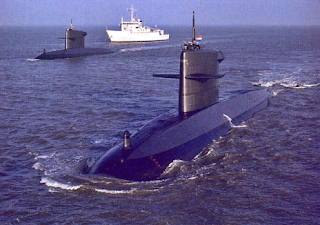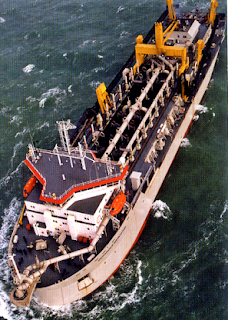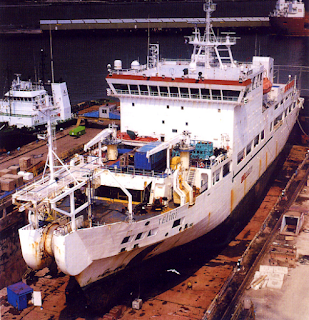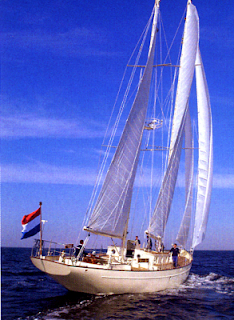Trailblazers of the Deep: Celebrating Women’s Legacy and Innovation in Naval Architecture & Marine Engineering
.png)
.png)
Imagine standing at the edge of a bustling harbor, watching colossal ships glide through the water, each carrying goods, passengers, or vital resources that keep the world turning. But have you ever wondered what makes each of these ships unique? What are the differences between a container vessel and a bulk carrier, or between a fishing trawler and an offshore rig? Ships, the unsung heroes of maritime trade and defense, come in many types, each carefully crafted to fulfill specific roles. Whether for transporting goods, or passengers, or aiding in scientific research, every ship has a purpose in this vast interconnected world. Understanding these types is essential to grasping the role they play in the maritime industry.
In this post, we will delve into the various ship types, explaining their functions and significance. From dry cargo ships to yachts, and dredgers to offshore rigs, each category has its distinct features. By exploring these, we can better appreciate the complexity and importance of maritime vessels in global operations.
Dry cargo ships are essential to international trade, responsible for carrying solid goods across oceans. These vessels can be divided into two major categories: unit cargo and bulk cargo.
- Container vessels: These ships transport standardized shipping containers, making global trade more efficient.
 |
| Container Ship |
- Roll-on/Roll-off (RoRo) vessels: Used to carry vehicles like cars, trucks, and trailers, loaded and unloaded by rolling on and off the ship.
 |
| Small Freighter Ro-Ro |
- Heavy-cargo vessels: Designed for oversized and heavy equipment such as construction machinery.
 |
| Semi-submersible ship |
- Refrigerated ships: These vessels transport perishable goods such as fruits, vegetables, and meat that require specific temperatures.
- Cattle ships: Specialized vessels for the transportation of live animals.
 |
| Cattle Ship |
- Bulk carriers: These ships carry unpackaged goods like coal, grain, or minerals.
- Ore carriers: Specifically designed to carry heavy ore, these ships transport materials crucial to industries like steelmaking.
 |
| Ore Carrier |
Without dry cargo ships, global trade would struggle to deliver essential goods to industries and consumers, showcasing the importance of these vessels in connecting economies worldwide
Liquid cargo ships are pivotal in transporting essential liquids, such as oil, chemicals, and gas, across vast oceans.
- Crude carriers: These enormous ships carry crude oil from extraction sites to refineries across the world.
 |
| Crude oil tanker |
- Product tankers: After crude oil is refined, product tankers carry finished products like gasoline and diesel.
 |
| Product tanker |
- Chemical tankers are used for transporting bulk liquid chemicals, playing a key role in the chemical industry’s supply chain.
 |
| Chemical tanker |
- LPG/LNG carriers: These specialized ships transport liquefied petroleum gas (LPG) and liquefied natural gas (LNG), vital for energy production.
 |
| LNG-tanker |
Passenger ships are designed to transport people safely across waters, offering a variety of travel experiences, from routine ferry crossings to luxury cruises.
 |
| luxury cruise ship |
Passenger ships serve an essential role in both daily transport and leisure travel, offering people the opportunity to explore the world by sea.
Navy vessels are the backbone of maritime defense, designed for warfare, surveillance, and strategic missions.
 |
| Frigate |
 |
| A Submarine |
Navy vessels are crucial for protecting nations’ waters and projecting power across seas, maintaining peace and security on a global scale.
Fishing vessels are essential for harvesting seafood and supporting food industries worldwide.
- Trawlers: Large vessels with specialized nets for deep-sea fishing.
 |
| Trawler |
- Other types: Includes various smaller boats designed for coastal or freshwater fishing, supplying local markets.
Without fishing vessels, the world’s seafood supply would be limited, highlighting their importance in feeding global populations.
Dredgers maintain the depth and cleanliness of waterways, ensuring harbors, rivers, and coastal areas remain navigable.
 |
| Trailing suction hopper dredger |
 |
| Cutter-Suction Dredger |
Dredgers play a vital role in marine infrastructure by keeping waterways functional for both commercial and military vessels.
Workshops support various maritime tasks, ranging from construction to recovery efforts.
 |
| Cable layer |
 |
| Buoy-layer/positioner |
Workshops are indispensable to marine operations, from maintaining communication infrastructure to responding to environmental disasters.
Yachts are synonymous with luxury and recreation, offering a private and personal way to experience the sea.
 |
| Sailing Yacht |
Yachts offer a unique way to enjoy the maritime world, providing leisure and comfort to those looking to explore the seas on their own terms.
Offshore vessels support the energy industry by facilitating offshore drilling and construction projects.
 |
| Drilling Ship |
 |
| S-lay pipelaying vessel |
Offshore material vessels are at the forefront of global energy production, supporting oil and gas exploration in some of the world’s most challenging environments.
Ships, in all their diversity, are integral to global commerce, defense, and energy. From transporting goods and people to supporting complex offshore industries, each type plays a critical role. Understanding the purpose and function of these vessels highlights the intricacy of maritime operations and the important part ships play in keeping the world connected.
🚢 Have thoughts or questions about different ship types? 💬 Drop your comments below and let’s dive into a discussion! 🌊⚓
Comments
Post a Comment